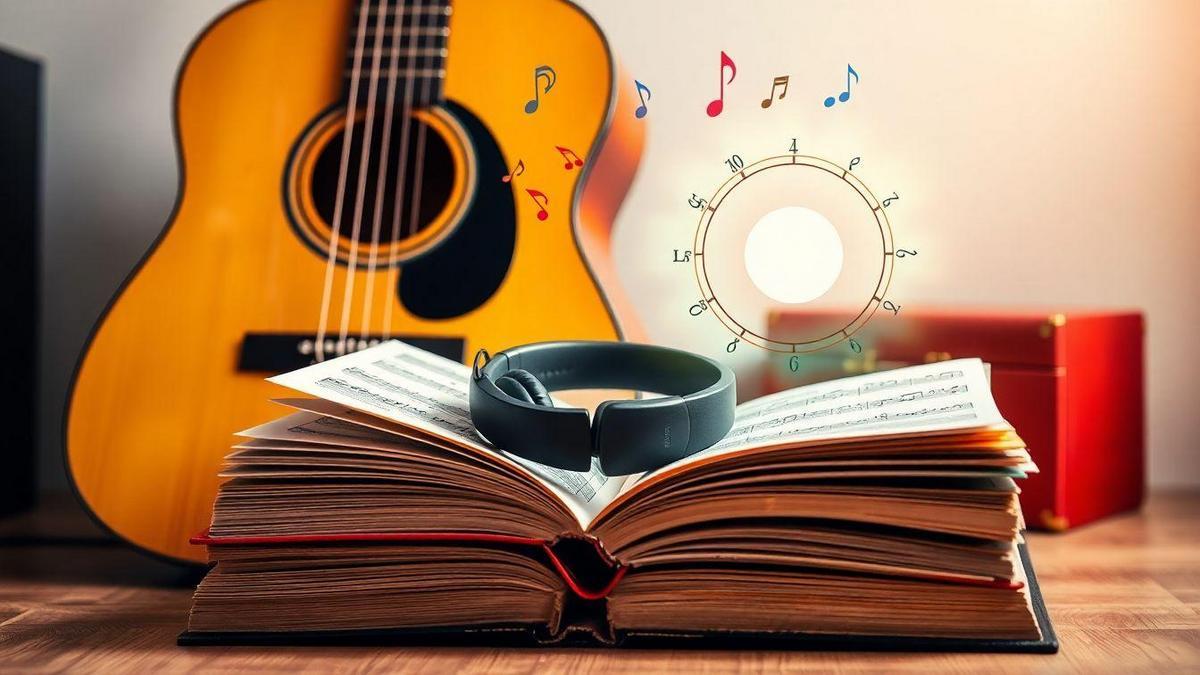Learning theory while playing your favorite songs
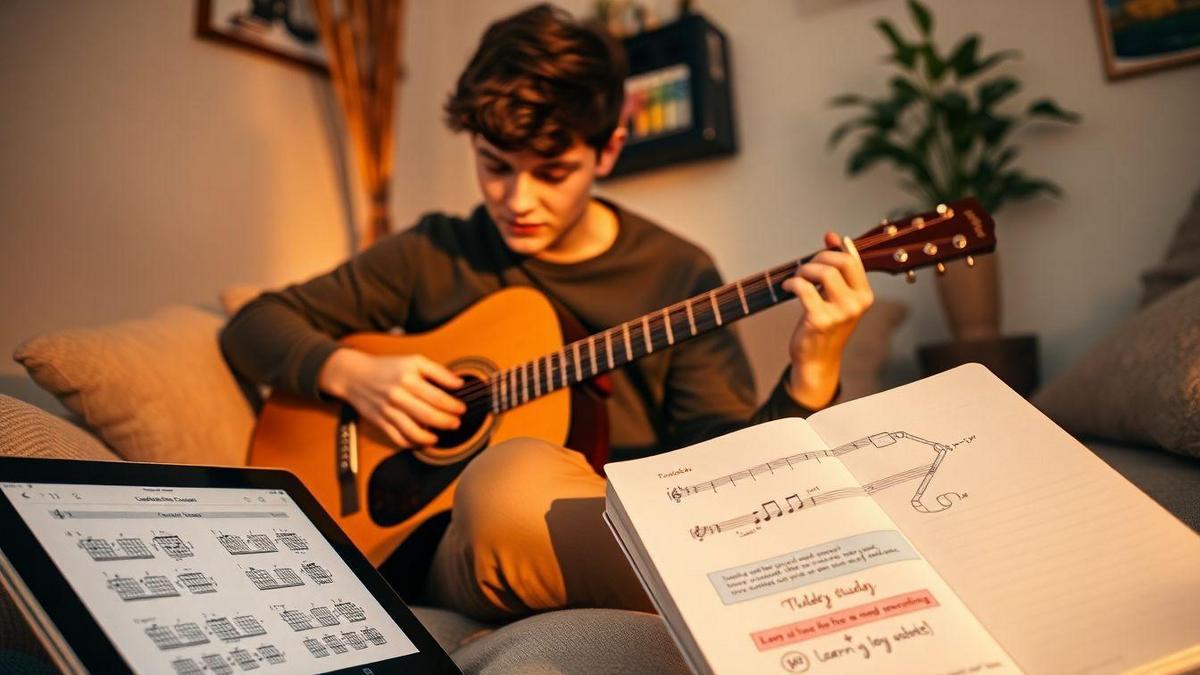
Learning theory while playing your favorite songs is how I turn tunes into clear, repeatable practice steps. I pick simple songs that match my level, map chords and scales to compact rules, run short focused drills, and connect audio to notation so reading and ear training speed up. Below is a streamlined, practical guide showing the routines, drills, and tech tricks I use to learn faster while still playing songs I love.
Key takeaway
- Use favorite songs to repeat facts and boost memory.
- Break ideas into small chunks and practice each part with a song.
- Pair audio, notation, and lyrics to lock musical meaning.
- Test yourself while the song plays to strengthen recall.
- Track small wins and reward yourself with the next chorus.
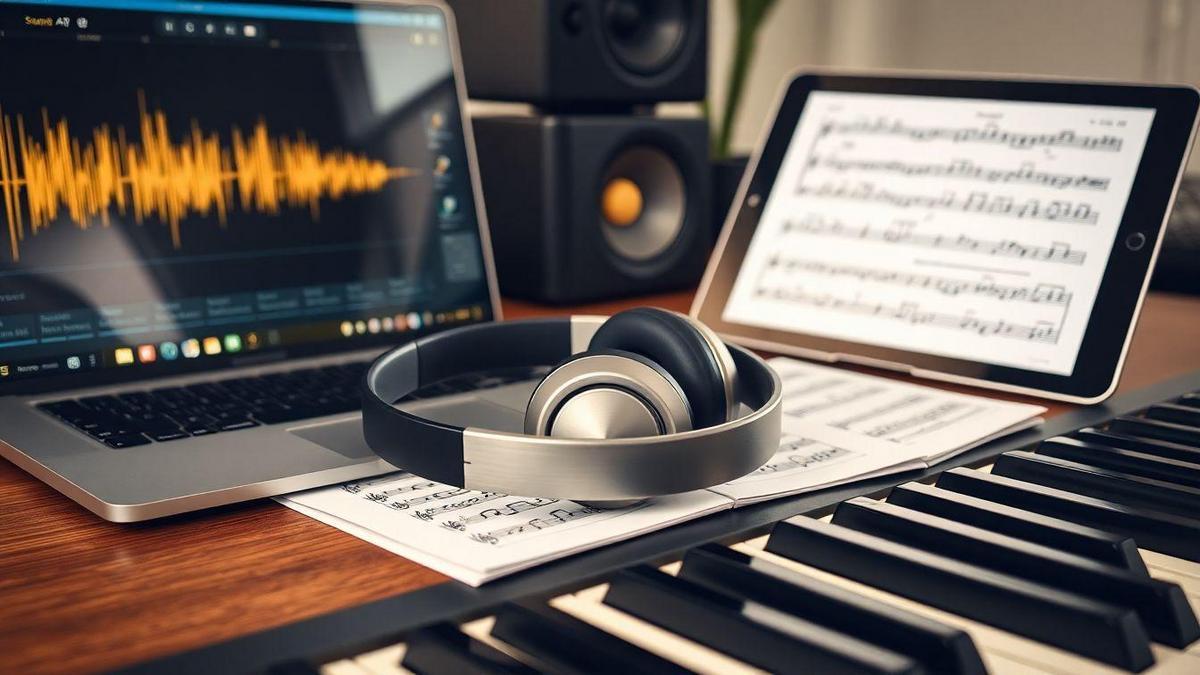
How I use songs to learn chords and scales (10-minute routine)
I learn theory by playing songs I love — it keeps motivation high and makes rules feel useful. Treat each song like a puzzle: chords are clues, scales are the voices that fit over them. Here’s a compact routine I use daily. For a concise reference on triads and how they function in keys, see Practical triads and chord functions guide.
Pick easy songs that match your skill
- 4 chords or fewer; slow changes at first.
- Friendly keys: guitar (G, C, D, A), piano (C, G, F).
- Prefer strong, familiar melodies you can sing.
- Example picks: pop with G–C–D–Em, folk C–G–Am–F, blues A7–D7–E7.
Map chords to simple theory rules
- Find the key — the chord that feels like home.
- Label chord functions: I, IV, V, vi.
- Choose corresponding scale: major / major pentatonic for majors; natural minor / minor pentatonic for minors (scales).
- Target chord tones first (root, 3rd, 5th) when soloing — use interval recognition to pick notes (interval practice).
- Use the vi = relative minor trick (e.g., Am in C major).
Quick example: C–G–Am–F → key C major → use C major or C major pentatonic; over Am play A, C, E.
My 10-minute chord-and-scale practice
- 1 min: warm-up (open-chord strum or one-octave scale).
- 2 min: play the progression slowly, say functions aloud (I, IV, V, vi).
- 2 min: target tones — root, third, fifth for each chord.
- 2 min: scale practice — key scale, then pentatonic.
- 2 min: simple soloing using target tones a few scale notes.
- 1 min: quick review — mark one thing to fix next time.
Set a timer and repeat daily — small, regular blocks add up (see a simple practice routine). Ten minutes stacked becomes real progress.
Multimodal learning: connect sound and sheet
Pairing audio with notation turns abstract sounds into clear shapes — an ear-to-paper bridge.
- Use a familiar song. Open the score and recording side by side and follow the notation while you listen (how to read chords and sheet music).
- Listen once for the big picture, then follow the score while listening. For practical steps on reading notation, see this Step-by-step guide to reading notation.
- Focus on one voice at a time: melody, bass, or harmony.
- Mark tricky spots and sight-read them without audio to test retention.
This method makes chord shapes, rhythms, and hooks visually obvious and speeds reading.
Quick sight-and-listen (5-minute drill)
- Pick 4 bars from a familiar song.
- Listen once, eyes closed.
- Open the score, sing the melody while reading the words.
- Play the part at half speed; repeat and then play with the recording at full speed. Tips: use a slow metronome, limit distractions, and break failing spots into smaller bits.
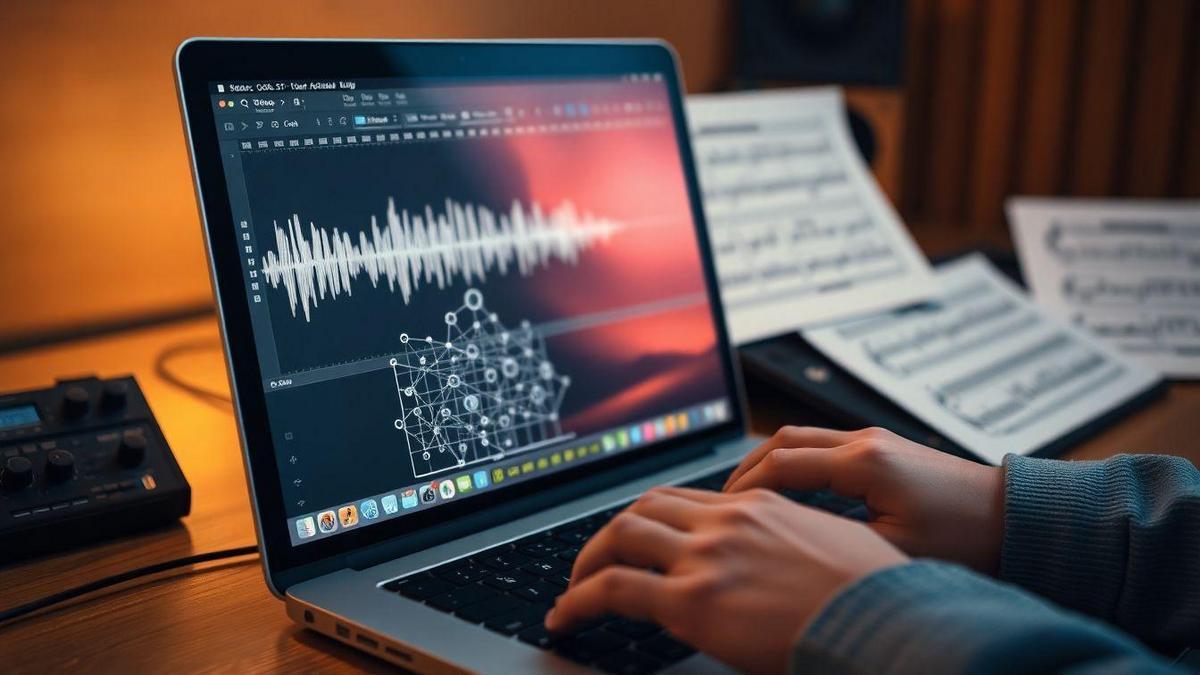
Using models and tech to speed analysis
Music-aware language models and audio-text embeddings are my sketch tools: fast maps I can test on the instrument. Research hub for music information retrieval is a good starting point if you want to dive into MIR tools and papers. They help label sections, suggest chord substitutions, and highlight repeated hooks — all useful when learning theory while playing your favorite songs.
Quick model prompts I use
- “Label the sections (intro, verse, chorus, bridge) and list the chord progression for each.”
- “Convert these chords to Nashville numbers and suggest three substitutions for each section.”
How I test substitutions
- Replace one chord at a time.
- Try functional swaps (IV ↔ ii) or modal swaps (major ↔ relative minor) — functional ideas come from basic harmony rules (beginner harmony).
- Play each suggestion and keep what fits by ear — practice substitutions like a gentle improv exercise).
Simple model-guided breakdown routine
- Paste chords/lyrics into the model.
- Ask for labels, key, and three substitutions per section.
- Convert to Nashville numbers if you want to transpose (transposition tips).
- Play each swap and decide by ear.
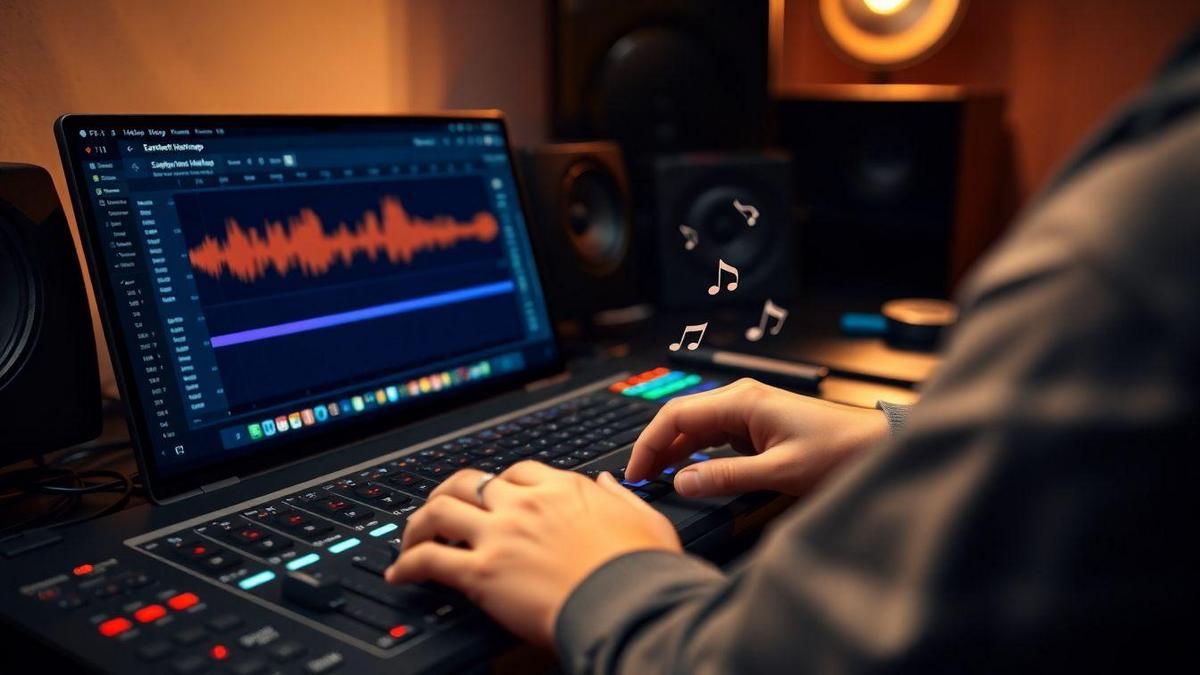
Read lyrics for mood, pick keys and dynamics
Treat lyrics as a mood map: a few strong words guide major/minor/mode, tempo, and dynamics.
- Circle feeling words in a line.
- Ask: bright or dark?
- Choose key/mode that matches (major, minor, Dorian, Mixolydian).
- Select voicings and dynamics that fit the lyric space.
Emotion → key/mode → chord ideas:
| Emotion | Key/Mode | Quick chord ideas | Reference |
|---|---|---|---|
| Joy / Bright | Major | I – IV – V (C – F – G) | Pop/Beatles vibes |
| Sad / Longing | Minor | i – VI – VII (Am – F – G) | Singer-songwriter ballads |
| Bittersweet | Dorian | i – IV – v (Dm – G – Am) | Modern folk |
| Rebel / Laid-back | Mixolydian | I – bVII – IV (G – F – C) | Bluesy pop |
Tempo/dynamics rules:
- Fast verbs → quicker tempo.
- Static images → slower tempo and more space.
- Intense words → louder dynamics; intimate words → softer.
Pair this with ideas on phrasing and expression to shape the line (how to add emotion to every note). For research on music and emotion that informs these choices, see this Overview of music’s effects on emotion.
Lyric-to-chord mood-matching drill (5 min)
- Pick a short lyric line; circle the emotion word.
- Choose major/minor/mode.
- Play two progressions (one fitting, one contrast).
- Sing the line over each and pick the best fit. Tips: keep voicings simple, use a capo or transpose to match range (reading & transposing basics), record the first take.

Train focused ears: rhythm → melody → harmony
I break listening into stages so each layer gets attention.
Stage 1 — Rhythm
- Tap the beat: count 1–2–3–4.
- Mark strong beats and groove changes.
- Mimic the drum/bass to feel the pocket.
Stage 2 — Melody
- Hum the main line until it sticks.
- Sing riffs and label leaps/repeated motifs.
Stage 3 — Harmony
- Listen for chord changes and bass movement.
- Name simple functions (I, IV, V, vi) by ear.
- Test one chord at a time on your instrument.
If you want to practice ear skills outside song chunks, start with a primer on playing by ear. A structured curriculum can also help — see this Curriculum for aural skills and ear training for university-style progression and exercises.
Three-step focused listening drill
- Identify (1 min): loop 30–60s and name the target (rhythm/melody/harmony).
- Isolate (3–5 min): mute all but the part you’re tracking; tap, hum, or play along.
- Verify (2–3 min): reproduce it on your instrument and record a 20s clip.
Five focused minutes beat unfocused hours.

Spot patterns with audio-text representations
Self-supervised audio-text models turn songs and lyrics into embeddings so you can search for similar slices and repeated motifs quickly. If you don’t have a model, use spectrograms and careful listening.
How I use it:
- Split a song into 1–4s audio slices and lyric lines.
- Get embeddings and compute similarity (cosine).
- Flag top matches, then confirm by ear.
- Tag repeats as melodic, rhythmic, or lyrical.
Pattern-finding activity (15–20 min)
- Pick a favorite song and lyrics.
- Split track into 2–3s slices.
- Find top repeated audio slices and repeated lyric lines.
- Pair each audio slice with a lyric line, sing the lyric over the slice, then play it.
- Turn a strong pair into a 4-bar loop and jam — this is a fast way to generate melody ideas (writing first melody tips).
This speeds discovery of riffs and hooks to copy and tweak.

Build a personalized playlist like a training ladder
Each song is a rung. Pick songs so you improve one or two skills each week, using favorites so practice feels like play.
How I sort songs
- Score songs 1–5 on chord variety, tempo/rhythm complexity, technique, harmonic content, ear/lead demands.
- Tag songs with a theory goal: chord changes, modes, cadences, sight-reading, ear training, rhythm.
- Place songs into slots: warm-up, practice, challenge, performance.
If you want practice to feel enjoyable, combine this with ideas on making practice fun and a short weekly plan (create a simple routine).
Weekly curriculum (short blocks)
- Monday: Warm-up (timing) — 15–20 min.
- Tuesday: Technique — 20–30 min.
- Wednesday: Theory drill — 20–30 min.
- Thursday: Apply — 25–35 min.
- Friday: Ear & improv — 20–30 min.
- Saturday: Performance run — 30–45 min.
- Sunday: Review & plan — 15–20 min.
7-song progressive playlist
- Warm-up (simple chords)
- Groove (feel/pocket)
- Harmonic clarity (analyze chords)
- Melody work (ear & phrasing)
- Technique challenge
- Improv spot
- Stretch/creative (harder harmony/tempo)
Rotate one song each week to match your theory goal and keep momentum.

Track mood to improve sessions
Affective feedback helps choose the right song and session length so practice stays productive.
Mood actions table:
| Mood | Action | Typical length |
|---|---|---|
| Energized | Tackle harder theory or improv | 45–60 min |
| Neutral | Balance skills and songs | 25–40 min |
| Frustrated | Shorten & simplify; small wins | 10–20 min |
| Tired | Short fun song or rest | 5–15 min |
Quick routine:
- Rate mood 1–5 (30s) and note one sentence.
- Choose a matching song/exercise (30s).
- Set a timer based on mood (10s).
- Mid-session checkpoint to reassess.
- End note: log one win and one tweak (30s).
Keep motivation steady with practical tips from staying motivated and by making practice enjoyable (fun practice ideas).

Run a focused session: listening → playing → writing
My repeatable sequence:
- Set one clear goal.
- Pick a reference song or lick.
- Break it into 2–8 bar chunks.
- Practice chunks slowly with a loop.
- Change one small element (chord, rhythm, melody).
- Record a short take and rate it.
30‑minute template
- 0–4 min: Warm-up (relaxation/tone)
- 4–14 min: Focused practice on the goal
- 14–22 min: Creative application (change one thing; record)
- 22–26 min: Reflect & measure (tempo, clean bars, confidence)
- 26–29 min: Quick polish (best take twice, add tiny arrangement)
- 29–30 min: Plan next step
Always use chunking, active recall, and variable practice. Turn mistakes into learning opportunities by treating them as data to fix next time (how to turn mistakes into learning opportunities). I explicitly frame each run as “Learning theory while playing your favorite songs” — practice targeted skills inside music I already love.
Measure progress with small metrics
Track tiny wins each session:
- Tempo reached (BPM) — use a metronome to measure progress (metronome tips).
- Bars played clean in a row
- New ideas recorded
- Confidence (1–5)
- Time without stopping
Example for a 10-minute focus:
- Start tempo: 60 BPM → Goal: 80 BPM
- Baseline clean bars: 3 → Session result: 6 Log one line per session to see momentum.
Conclusion
Turn songs into practice blueprints: pick easy, familiar tunes; map chords to functions; match scales; and use bite-sized routines (10-minute and sight-and-listen drills) to lock muscle memory. Pair audio with notation (reading & notation tips), read lyrics for mood, and use models or embeddings when they save time — always testing suggestions on your instrument. Track mood and simple metrics so practice stays positive and targeted. Do this by setting one tiny goal, choosing a favorite song that contains it, chunking, practicing deliberately, and measuring one small metric. Repeat daily and let the wins snowball.
If you want more practical recipes and drills for Learning theory while playing your favorite songs, visit https://clickneutro.com.
